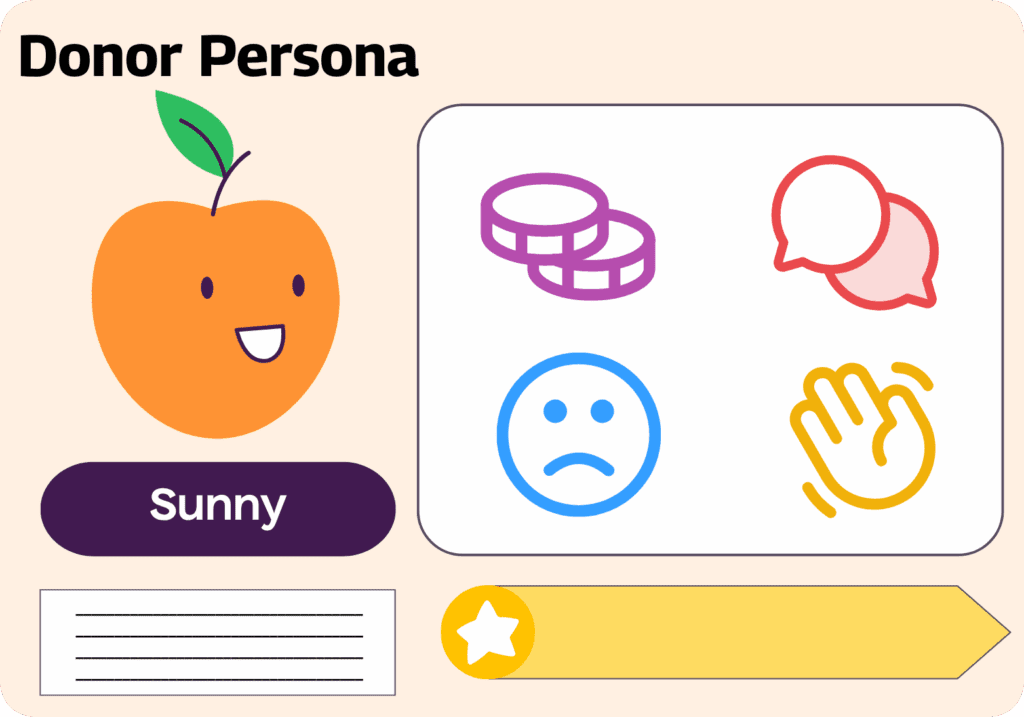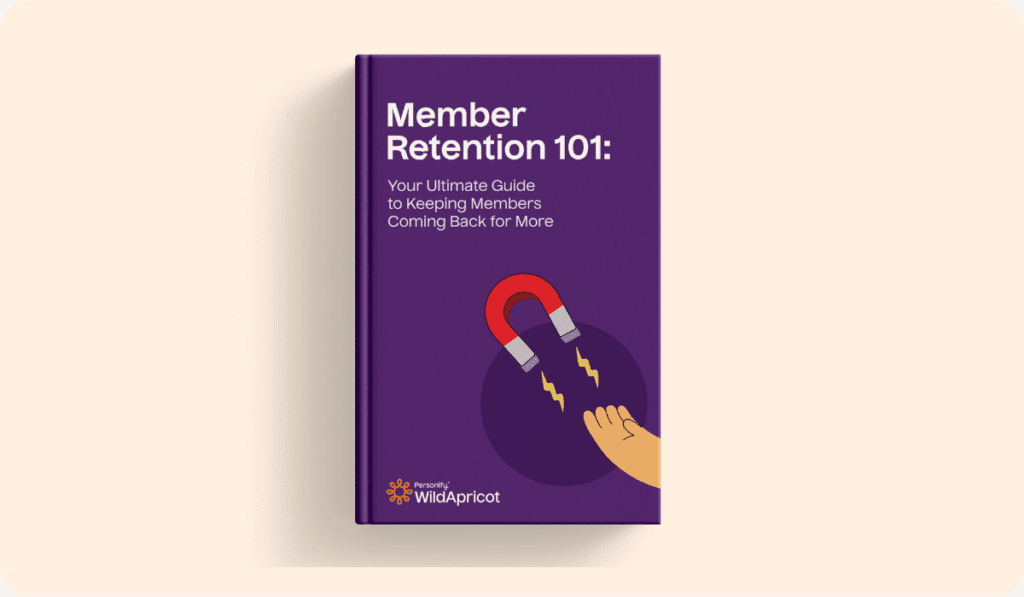Welcome to part two of our blog series on year-end giving! If you missed part one, we covered the importance of end of year giving and what a giving campaign is. Now that you’ve learned about year-end giving, it’s time to plan, plan, plan!
In this blog post we’ll cover the importance of planning your giving campaign early, how to ask for donations, the 12 steps to take before launching your campaign and a helpful checklist for year-end giving campaigns.
Why Is It Important To Start Planning a Year-End Giving Campaign Early?
The most successful year-end campaigns all have one major thing in common: planning, planning and more planning!
The holidays are a time when donors are most likely to give, so it’s important to put lots of thought, strategy and effort into your year-end giving campaign. And remember—other nonprofit organizations will be competing with you for your potential donors’ attention. All the more reason to give your campaign that extra attention!
Planning your campaign well in advance of the fourth quarter (we have some advice on timelines below!) will give you plenty of time to craft your strategy. This will also help you iron out the wrinkles and get ahead when any unforeseen issues arise.
How Do I Ask For Donations at the End of the Year?
As a fundraiser, you know that simply asking for donations doesn’t usually get you too far. You need to give people a compelling reason to give.
When crafting your year-end donation appeal message, be sure to do the following:
- Tell a story: Center your ask for donations around one beneficiary—tell your audience their story and help them form an emotional connection.
- Be specific: Tell your audience exactly what the beneficiary and others like them need the most. Rather than asking for donations of any size, let them know how much you need from each donor in order to make a difference. Offer multiple suggested amounts so people feel compelled to give at several levels.
- Show impact: Tell your audience what would happen if you reach your fundraising goal. How would the beneficiaries’ lives change?
Inspiring people to give right here, right now will be sure to give you that end of year donation boost!
Year-End Giving Campaigns: Before You Launch
Successful year-end giving campaigns require a lot of planning, organizing and teamwork. Make sure you have a solid team together to make sure your giving campaign goes off without a hitch!
12 Key Steps Before You Launch Your Campaign
1. Define Your Year-End Giving Team
Like any fundraising campaign, an effective year-end campaign is a team effort! Identify who will be part of this team—staff members and volunteers—and what each of their responsibilities will look like.
Some useful roles include:
- Project manager: Every good campaign needs a leader! Assign this role to someone who is confident and cool-headed under pressure.
- Campaign strategist: If you have someone who has run successful campaigns before, pass this role to them stat. Every organization learns best from experience.
- Content writer: From blogs to emails to social media posts to appeal letters, campaigns take a lot of writing. Give this role to someone who knows your brand voice inside out.
- Designer: It can’t just sound nice—it also has to look good. If your content writer manages your brand voice, your designer manages your brand’s visuals!
- Marketer: Marketing is a huge part of getting your campaign out into the world. Be sure to have a teammate who knows the ins and outs of social media and email marketing in particular.
- Donor relationship manager: Your connection to donors shouldn’t stop after the payment has been processed. Assign someone the role of keeping up with your donors and fostering donor stewardship. Using a membership management software like WildApricot will make this job a breeze!
Make sure the roles you assign reflect each team member’s strengths and that everyone has the bandwidth to take this on. Give everyone space to succeed!
2. Create a Workback Schedule
“Ideally, you’ll start thinking about year-end giving in January,” says Bedlington. “You don’t want to bump up against other campaigns and priorities so it’s best to plan both your messaging and your tactics as early as possible.”
Looking to build out a 6 or 12-month plan for your year-end giving campaign? We’ve created a checklist for each timeline that you can download here!
For a quick overview, here’s a sample timeline for planning your year-end giving campaign:
Summer:
- Develop your communications. Write your content for email, social media or other channels, shoot your videos or start booking your events.
- Leave as much time as possible for approvals, because soon it’ll be…
October:
- It’s launch time! Starting your campaign in October gives you extra time to build up energy and make connections. This is especially important if your campaign includes direct mail.
- Keep a close eye on how people are engaging with your content. This gives you room to troubleshoot nice and early.
November:
- You’re in full year-end fundraising mode now! Your campaign should be well underway across your chosen channels.
- Amp up your end of year donations by setting up a rockstar Giving Tuesday campaign.
December
- Keep the content coming and don’t stop until the end!
- Don’t forget about that last-minute push for gifts. December 31 is the tax deadline for making charitable gifts, so schedule a final reminder to go out that very day to catch all those procrastinators.
The New Year
- January is the time to review. Sit down with your team, board of directors and any other relevant stakeholders to compare notes on how things went.
- When May and June hit, start brainstorming your approach. What did you learn from last year? What specific fundraising need do you want to focus on this year?
- Get all the approvals you need to get your plan going come summer.
3. Evaluate Where You Were Last Year
An effective fundraising plan should build on your past successes or shortcomings. This way, rather than starting from scratch, you can intentionally repeat what worked well and improve on what didn’t.
Looking at last year’s key performance indicators (KPIs) will also help you set realistic goals for this year’s end of year giving campaign.
“It’s always important to benchmark yourself against yourself,” says Bedlington. “You need to know what your organization has done to predict what you can do.”
Here are a few important KPIs you should look at:
- Total amount raised
- Number of gifts received
- Average gift size
- Number of new donors
- Donor retention rate (of all the people who donated, how many of them were returning donors?)
- Conversion rate (of all the people who saw your fundraising appeal, how many of them took action?)
- Cost per dollar raised (how much did you spend for every $1 you raised?)
- Return on investment (how much did you raise for every $1 you spent)
4. Set Your Fundraising Goal
Now that you know where you were last year, you can set specific goals for this year!
Bedlington recommends looking closely at past campaigns to see what’s worked and what hasn’t, and then setting your fundraising objectives using simple math.
“It’s always nice to project an increase of at least a couple percent compared to last year,” she says. “If you have a past campaign to benchmark against, estimate how many more people you’ll need to reach based on last year’s average gift to achieve your increased goal.”
But what if this is the first time you’re launching a year-end campaign?
In this case, take a look at your revenue for the year. This will help you figure out how much you’ll need to raise to meet your overall fundraising goals.
That final number should be realistic (nothing raises morale like smashing through a goal!) but make sure your community still sees you have real needs that they can help you meet.
Set your campaign up for success by using SMART Goals.
SMART Goals are:
- Specific: Choose a single goal to focus on. All of your other big ideas can be worked on later—for now, give one specific goal your all.
- Measurable: You can’t measure your success if your goal isn’t actually measurable! Choose the standards by which you can determine your progress.
- Attainable: It’s great to dream big, but make sure your goals are possible with your current reach and resources. Meeting a modest goal is better than missing a super high one.
- Relevant: Your goal should be relevant to your organization. Think about what a year-end giving campaign represents, and set your goals around it.
- Timely: Give your goal a start and an end date. This will give your team a framework to plan within and your donors a sense of urgency.
These qualifications will hold you and your team accountable as you carry out your end of the year giving campaign!
5. Source Partners, Influencers and Matches
This isn’t a must, but partnerships can be a great way to boost your year-end giving efforts. Finding organizations whose mission and values align with yours can help you spread the word about your campaign to a new audience.
There are lots of opportunities to collaborate with:
- Local community organizations, nonprofits or corporations
- Local businesses
- Social media influencers or micro influencers
You may also want to consider identifying a match opportunity to get your community fired up about your end of the year giving campaign.
A match is when you ask a supporter—this could be a board member or one of your closest, most engaged donors—to commit to “matching” donations up to a certain amount. This essentially doubles the impact of every dollar raised!
A study from Philanthropy Works found that a matching opportunity increases the likelihood that an individual will donate by 22%.
So how do you go about finding your match?
“We always start talking to major gift officers in the middle of the year about whether any matching opportunities may be possible for year-end giving,” says Bedlington.
She also offers this advice for a simple way to secure a match: “Simply ask a donor who has already given if they would approve of having their gift positioned as a match.”
6. Identify Your Channels
As we’ve already discussed, a successful year-end campaign has multiple channels.
When considering which channels to use, think about how your donors usually like to hear from you.
Do your donors prefer to give by direct mail? Are they a younger crowd that prefer digital outreach? Or is an event usually the best way to get them excited about giving?
Check your stats and reports from previous years to find giving trends!
Bedlington recommends using as many channels as possible for maximum impact.
“Using a combination of direct mail, a series of emails, phone calls, social media, and even an event will help create a consistent message and call to action no matter how your community is interacting with your organization,” she says.
Donors are also more likely to give if they hear about your campaign on two or more occasions through two or more different channels. For example, they receive an email about it first, and then see a letter in the mail three days later.
To help you maximize your results, consider including as many of the below channels as you have available to you:
- Direct mail
- Fundraising event
- Your website
- Organic social media content
- Paid social media ads and/or Google ads
- Paid media placements
- Personal outreach to potential donors (for example, phone calls)
- Partnerships
7. Diversify Ways To Give
So you’ve diversified the ways that donors will hear about your year-end campaign—that’s great! But you also need to diversify the ways that donors can actually make donations.
Providing only one option will likely lose you potential donors who have different preferences or find the option you gave too much of a hassle. If you offer multiple options to choose from (especially quick and easy ones!), donors will be much more likely to follow through on their giving.
Look for ways to make donations especially meaningful to your supporters. For example, tribute gifts are a must-have option around the holidays. They make wonderful holiday gifts to loved ones who care deeply about your mission and often bring in donations from people who wouldn’t have donated otherwise.
Consider including as many of the below ways to give as you can:
- Online donations
- By phone
- By mail
- In-person
- Text-to-give
- Recurring donations (monthly, quarterly, etc.)
- Tribute gifts (in honor or memory of someone)
- Gifts of securities (e.g. stocks)
- Pledges (promise now, pay later)
- In-kind donations (e.g. in the form of equipment or supplies)
- Legacy gifts (leaving a gift in one’s will)
8. Set Up Your Fundraising Software
Fundraising software is essential to managing fundraising and day-to-day operations! If your organization doesn’t have it set up, is looking to upgrade or simply wants to try a new fundraising tactic (e.g. crowdfunding or peer-to-peer fundraising), now is the perfect time to invest in new software.
Here are the most common types of software tools that nonprofits use to help with their fundraising activities:
- Event management tools
- Bookkeeping tools
- Online payment processing tools
- Fundraising software and donor management tools
- Email marketing tools
- SMS marketing tools
- Social media tools
- Project management and collaboration tools
- Volunteer management tools
- Website builders
- Website analytics tools
- All-In-One solutions for nonprofits
9. Define Your Audience & Segment
The key to a successful year-end campaign is to send the right message to the right people at the right time. But your potential donors aren’t all the same!
Do some work to learn who they are and what kind of message they need to hear. Start by defining your audience—who do you want to target with your campaign?
Some examples you could work with include:
- Current and lapsed donors in your database
- Other people whose contact information you have
- Your social media followers
- Your website visitors
- Members of your community
The next step is to segment your audience into groups, then tailor your message based on what you believe will resonate best with each group.
Let’s take a look at your current and lapsed donors, for example. Instead of sending them the same generic ask letter, you’ll see much better results if you send them a customized letter.
Bedlington suggests segmenting based on donor type using the “recency, frequency and monetary” (RFM) model. This means thinking about how recently your donors have contributed, how often they contribute and at what level.
This tried and true approach takes a lot of the guesswork out of the process!
“I’d recommend segmenting your list into new, monthly, mid-level, active and lapsed donors,” she says. “You can have up to six segments and maybe even more if you have a really diverse donor community. The more personal the message, the better the response.”
But how exactly can you customize your messaging for each group?
“First, however you’re communicating with donors, you should always be specific about how they support your organization,” says Bedlington. “If I’m a monthly donor to an organization and they don’t acknowledge that fact in their communications, it makes me feel like they don’t appreciate my regular donations.”
To keep things simple, don’t write a brand-new letter or email message for every single donor group. Instead, try customizing the opening lines of the same message to reflect each group’s giving type.
10. Craft Your Appeal
Follow these four best practices for writing the perfect appeal letter to support your end of year giving campaign:
- Tell a Story: A touching story about how donations will change lives will help readers form an emotional connection and inspire them to give.
- Use a Clear Call-to-Action: State exactly what you want readers to do—make it easy for them to take action with prompts like “Make a gift today”.
- Focus on the Donor: Change statements like “Our organization needs X, Y, Z” into statements like “You can help make X, Y, Z possible for our beneficiaries”.
- Say Thanks: Express gratitude with every chance you get, especially if you’re reaching out to donors who have given to your organization in the past.
If you need more help concocting the perfect year-end communications, you’ll find more in-depth tips in the following articles:
- Don’t Write Another Year-End Giving Letter Without These 5 Tips (+Template)
- How to Write the Perfect Donation Letter
- 5 Year-End Fundraising Emails That Are Sure to Increase Donations.
11. Create Your Collateral
Your appeal letter will be turned into different versions for your direct mail and email channels. But what about other channels like social media, ad placements, your website and the press?
Be sure to create all the necessary collateral (social media posts, website banners, graphics and videos) well in advance of the start of your campaign. Keep everything in a central location so anyone who needs to access them throughout the campaign can do so quickly and easily!
12. Finalize Your Deadlines
Have one last meeting with your team to finalize your timeline, important deadlines and go-live dates. Before you kick off, make sure everyone feels good about their roles and responsibilities.
Launching Your Year-End Giving Campaign
Whew! We know that was a lot of great info on planning your end of year giving campaign. Hopefully you feel prepared and ready for the next step: launching your campaign! We will dive into those best practices part three of this blog series – The Ultimate Guide to Year-End Giving: Launching Your Year-End Giving Campaign. We will also give some great tips on wrapping up your giving season by sharing results, saying thank you and evaluating your goals.









